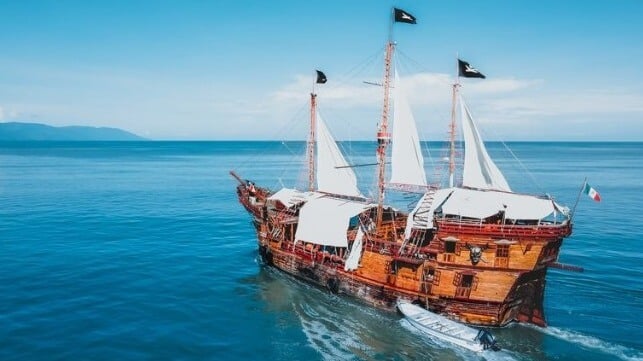The maritime industry has always been shaped by global currents of politics, trade, and regulation. Today, these forces appear more turbulent than ever. From shifting geopolitics and renewed trade rivalries to wars, ambitious regulatory agendas, and rapid technological progress, shipping sits at the crossroads of global transformation. Wars may create longer routes that increase demand for tonnage. Deglobalization may be the latest political buzzword, but in practice, economies remain not just linked but deeply interwoven, ensuring shipping’s enduring centrality. Meanwhile, regulation, though costly, is gradually evolving to reconcile social expectations and political ambition with competitiveness.
Beyond Deglobalization and Trade Rivalries:Resilient but Reconfigured Flows
Talk of deglobalization has become common, with governments declaring that they are promoting “reshoring” and pursuing “strategic autonomy.” Yet modern economies are not just linked or even interdependent. They are deeply - and perhaps irreversibly- interwoven. Most products cross multiple borders and even continents, as they are being assembled to their final form.
Inevitably, tariffs and protectionist measures disrupt efficiency at the expense of the end consumer but rarely eliminate flows; instead, they redirect them, creating new routes, shifting cargoes to alternative suppliers, and often lengthening voyages. For shipping, this means more complex patterns, greater reliance on regional hubs, and sustained demand for vessels. Shipowners able to adapt quickly, by redirecting their assets to new routes, stand to benefit, as disruption paradoxically reinforces the central role of shipping in a fragmented but interwoven world.
Wars and Conflicts: Human Tragedy and Trade Disruption
Armed conflicts are, first and foremost, human tragedies. They cause immense loss of life, devastate communities, and destabilize regions. For the maritime industry, the consequences extend beyond economics: seafarers often find themselves on the frontline, exposed to heightened risks, restricted routes, and the psychological strain of operating in dangerous waters. Crew safety and welfare become immediate and pressing concerns.
At the same time, conflicts inevitably disrupt trade patterns, again, at the expense of the end consumer. The war in Ukraine, for example, curtailed Black Sea exports, yet commodities still moved — often along longer, costlier routes. Russian crude redirected from Europe to Asia added thousands of nautical miles per voyage, while Europe’s pivot toward U.S. LNG and Middle Eastern suppliers created new flows and bolstered tanker demand.
This underscores that even as war inflicts devastation, shipping remains indispensable in sustaining life. Trade rarely disappears but reroutes, creating longer voyages, higher utilization, and new safety and logistical challenges.
Regulation and Competitiveness: Policy Makers Easing the Burden
Regulation is another defining force, particularly in Europe. The EU’s inclusion of shipping in its Emissions Trading System (ETS) and its broader decarbonization agenda raised serious concerns about competitive disadvantages, as non-EU operators are not bound by equivalent requirements.
Policy makers, however, have begun to respond. The European Commission’s Omnibus Simplification Package seeks to ease compliance burdens, offering flexibility and transitional support while preserving ambitious climate goals. This reflects a willingness to balance environmental responsibility with competitiveness.
At the same time, all eyes are on the IMO meeting in October 2025 and the possible adoption of the Net Zero Framework. If adopted, it would create a substantial compliance burden by imposing requirements on GHG fuel intensity combined with a pricing and reward mechanism — the first of its kind for any global sector.
Approved at MEPC 83 in April 2025, the framework would take effect in 2028 and apply to ships over 5,000 GT engaged in international trade. While demanding, its worldwide scope would at least create a more even playing field, addressing one of the industry’s greatest frustrations with regional measures that distort competition.
Resilience, Adaptabilityand Growth
The maritime industry is entering a period of profound adjustment with shifting trade flows and rising regulatory demands. At the same time, the acceleration of technology is also reshaping how companies operate. Success will depend not only on capital, scale, or employability of the vessels, but on the ability to adapt quickly, absorb change, and turn disruption into opportunity.
Technology is playing a central role in this transformation. Digitalization and automation are improving efficiency and safety, though at significant cost, while artificial intelligence promises powerful tools for decision-making, optimization, and risk management. The challenge lies in ensuring that these innovations are first assessed thoroughly and then implemented responsibly.
At the same time, the attraction and retention of talent — both at sea and on shore — remains one of the industry’s greatest tests. Seafarers face demanding conditions that require stronger support, while onshore roles increasingly demand advanced technical skills to manage digital systems and regulatory complexity.
In today’s fluid environment, shipping companies must not rush to decisions, but rather, remain alert, lean and open-minded — ready to act decisively as clarity emerges. It is a time for carefully assessed choices, grounded in reliable data and sound judgment.
Such judgment relies on the right people and the support of trusted partners who bring expertise and perspective. Ultimately, resilience will rest yet again on agility, discipline, and collaboration.
By Pinelopi Kassani
Governance, Risk and Compliance Partner,
Chartered Accountants Moore Stephens S.A.









